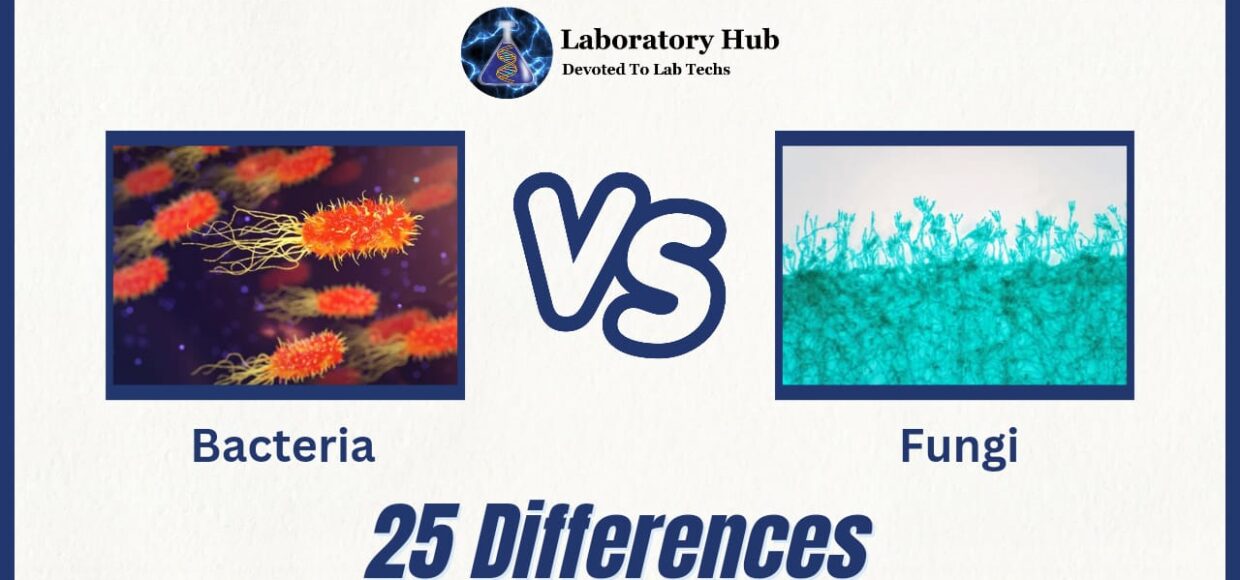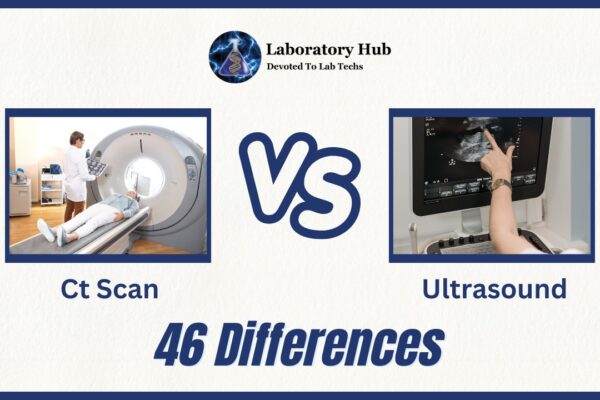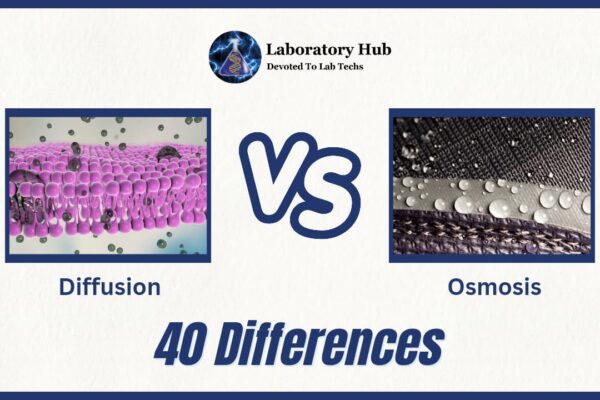Bacteria vs Fungi- 25 Major Differences
Bacteria and fungi fascinate! These tiny creatures are essential to Earth’s ecosystems and human well-being. Understanding microbes and fungus is crucial to understanding our planet. Bacteria are single-celled bacteria in the domain Bacteria. They live in deep-sea vents and human guts. Bacteria have no nucleus or membrane-bound organelles. They power the food cycle, nitrogen fixation, and breakdown despite their modest size. Symbiotic bacteria help plants and animals survive and flourish.
Eukaryotic fungi include yeasts, molds, and mushrooms. Fungi have nuclei and membrane-bound organelles, unlike bacteria. Ecosystems depend on them for decomposing organic materials and recycling nutrients. Mycorrhizal networks help plants absorb nutrients from fungi. Fungi provide food, medicine, and enzymes, making them economically and ecologically important.
This thorough overview covers bacteria and fungi’s features, categorization, ecological functions, and uses. We’ll examine their traits, reproduction, and nutrition. We’ll also look at their crucial functions in the nutrient cycle and symbiotic partnerships. We shall also examine their health effects, both positive and negative.
This handbook is for students, researchers, and interested people who want to learn about bacteria and fungi. We’ll explore microbes and fungi’s amazing talents and deep impact on our lives.
Also read: Archaea vs Bacteria- 20 Differences
S. No. | Aspect | Bacteria | Fungi |
1 | Definition | Microscopic single-celled organisms | Microorganisms with eukaryotic cells |
2 | Cell Type | Prokaryotic (lack a nucleus) | Eukaryotic (have a nucleus) |
3 | Examples | Escherichia coli, Staphylococcus aureus | Candida albicans, Aspergillus fumigatus |
4 | Structure | Simple, single-celled structure | Complex, multicellular or unicellular |
5 | Cell Wall | Present | Present in most, composed of chitin |
6 | Reproduction | Binary fission (asexual) | Spores (asexual and sexual reproduction) |
7 | Size | Typically smaller (few micrometers) | Larger (tens to hundreds of micrometers) |
8 | Metabolism | Diverse, some can perform photosynthesis | Heterotrophic, absorb nutrients externally |
9 | Antibiotic resistance | Can develop antibiotic resistance | Less likely to develop antibiotic resistance |
10 | Disease-causing potential | Some species are pathogenic | Some species are pathogenic, causing fungal infections |
11 | Modes of transmission | Direct contact, air, water, food | Airborne, direct contact, contaminated surfaces |
12 | Role in ecosystem | Decomposers, nitrogen fixation, symbiotic relationships | Decomposers, mutualistic relationships with plants |
13 | Growth conditions | Can thrive in various environments (extremophiles exist) | Prefer specific environmental conditions (temperature, pH) |
14 | Respiration | Can be aerobic or anaerobic | Mostly aerobic, some species can be anaerobic |
15 | Movement | Some species are motile (flagella) | Non-motile, except some aquatic fungi |
16 | Energy source | Organic or inorganic compounds | Organic matter, dead organisms |
17 | Cell division | Binary fission | Mitosis or meiosis |
18 | Antibiotics | Produce antibiotics (e.g., penicillin) | Not known to produce antibiotics |
19 | Genetic material | Circular DNA (plasmids) | Linear DNA, multiple chromosomes |
20 | Examples of diseases | Tuberculosis, pneumonia, cholera | Athlete’s foot, ringworm, candidiasis |
21 | Cell organelles | Lack membrane-bound organelles | Possess membrane-bound organelles |
22 | Hyphae | Absent | Present, forming a network of filaments |
23 | Spores | Rarely form spores | Form spores for reproduction and dispersal |
24 | Cell membrane | Composed of peptidoglycan | Composed of ergosterol |
25 | Examples of beneficial roles | Gut microbiota, nitrogen fixation, food production | Decomposition, mycorrhizal relationships with plants |
26 | Disease treatment | Antibiotics effective against bacterial infections | Antifungal medications for fungal infections |
27 | Examples of symbiotic relationships | Gut flora in humans, nitrogen-fixing bacteria in legumes | Mycorrhizal association with plant roots |
Frequently Asked Questions (FAQS)
Bacteria and fungus are different microbes. Fungi can be unicellular (yeasts) or multicellular (molds and mushrooms), while bacteria are single-celled prokaryotic creatures.
Fungi have nuclei and other membrane-bound organelles, whereas bacteria have not. The cell types of prokaryotes (bacteria) and eukaryotes (fungi) cause this structural difference.
Bacteria can be autotrophic or heterotrophic. Heterotrophic fungi feed on organic materials or parasites.
Bacteria reproduce asexually through binary fission. Fungi reproduce sexually and asexually. Spores may spread and form new creatures.
Streptococcus, and Staphylococcus are bacteria. Candida, Aspergillus, and Penicillium are fungus.
Bacteria may cause strep throat, UTIs, and pneumonia. Some fungi release toxins and cause illnesses like yeast or fungal nail infections.
Bacteria help ecosystems cycle nutrients, decompose, and fix nitrogen. Fungi degrade organic debris, recycle nutrients, and live in symbiosis with plants.
Bacteria and fungus benefit. Bacteria make yogurt and medications. Fungi are used to make bread, cheese, enzymes, antibiotics, and immunosuppressants.
Bacteria develop antibiotic resistance faster than fungi. They gain resistance genes by transferring genetic material across cells. Fungi seldom develop resistance.
Bacteria and fungus interact. Fungi and bacteria may both create antibacterial chemicals. Fungi and plant roots can create mycorrhizal connections.







